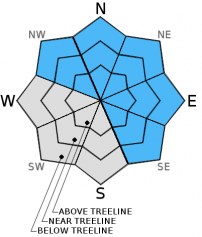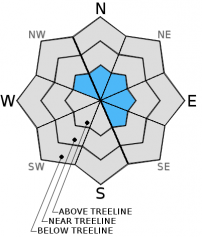| Sunday | Sunday Night | Monday | |
|---|---|---|---|
| Weather: | Mostly cloudy skies, becoming cloudy. A chance of snow in the afternoon. | Cloudy skies with snow. | Cloudy skies, becoming mostly cloudy. Snow in the morning. Snow showers likely in the afternoon. |
| Temperatures: | 34 to 41 deg. F. | 25 to 30 deg. F. | 29 to 34 deg. F. |
| Mid Slope Winds: | SW | SW | SW |
| Wind Speed: | 15 to 30 mph with gusts to 40 mph, increasing to 30 to 40 mph with gusts to 70 mph in the afternoon. | 30 to 45 with gusts to 70 mph, decreasing to 20 to 35 mph with gust to 55 mph after midnight. | 20 to 30 mph with gusts to 40 mph, decreasing to 10 to 20 mph with gusts to 30 mph in the afternoon. |
| Expected snowfall: | Trace | 4 to 8 | 2 to 5 |
| Sunday | Sunday Night | Monday | |
|---|---|---|---|
| Weather: | Mostly cloudy skies, becoming cloudy. A chance of snow in the afternoon. | Cloudy skies with snow. | Cloudy skies, becoming mostly cloudy. Snow in the morning. Snow showers likely in the afternoon. |
| Temperatures: | 29 to 34 deg. F. | 21 to 27 deg. F. | 24 to 29 deg. F. |
| Ridge Top Winds: | SW | SW | SW |
| Wind Speed: | 35 to 45 mph with gusts to 65 mph, increasing to 50 to 60 mph with gusts to 90 mph in the afternoon. | 55 to 65 mph with gusts to 95 mph, decreasing to 45 to 55 mph with gusts to 85 mph after midnight. | 35 to 45 mph with gusts to 65 mph, decreasing to 10 to 20 mph with gusts to 40 mph in the afternoon. |
| Expected snowfall: | Trace | 4 to 8 | 2 to 5 |

























